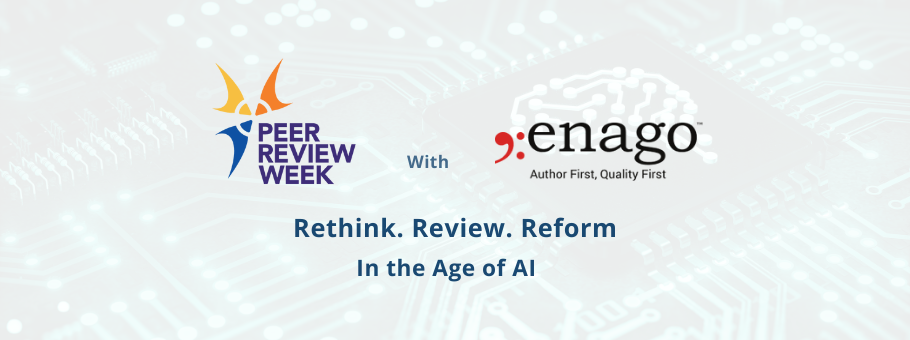Do ESL Peer Reviewers Receive Fewer Reviewing Opportunities?

Peer reviewers are central to scientific publishing. Their job is to ensure the quality of articles published by a journal. In doing this, they maintain the credibility of a journal.
So, who can become a peer reviewer? Peer reviewers must be experts in their field with enough experience to advise on the quality of the articles they review. They must be people who can:
- Make sure the work is relevant to the journal
- Advise about important earlier work that should be considered
- Check methods and statistics in the article. Sometimes, peer reviewers might be asked to correct the language.
- Make sure that the conclusions are supported by the research.
In theory, anyone who meets these criteria should be able to peer review. However, this is not always the case.
Where in the World are Peer Reviewers?
As might be expected, the largest proportion of peer reviewers are in the USA. In fact, researchers in the US provide 32.9% of all reviews, worldwide. Surprisingly, this figure is even higher than the proportion of articles written by US researchers. Altogether, the US supplies 25.4% of published articles.
At the other end of the scale, China provides only 8.8% of reviews, despite producing 13.8% of articles. Researchers in China provide a similar number of reviews to those in the UK, but submit more than twice as many manuscripts. China actually submits almost as many manuscripts as the US. The difference is certainly not due to lack of willingness to review. Actually, research has found that Chinese authors are most likely to accept an invitation to review.
This trend can be seen across the world. In general, established countries – particularly the US, Australia, and Europe – review more than emerging regions, relative to their article outputs. Emerging regions include India, China, Turkey, and Iran.
Challenges for ESL Peer Reviewers
Why are most peer reviewers from established countries? Journal editors might be the answer. Nearly all editors – 96.1% – are based in established countries. Just 3.9% of editors are found in emerging regions. Editors are more likely to select reviewers from their own region, which could explain the lack of reviewers from emerging countries.
Clearly, reviewers from emerging regions are likely to be ESL speakers. This can be a challenge, either real or in the minds of editors. Editors may have less confidence in the ability of ESL reviewers to correct the language of an article, for example. Also, because of this lack of opportunity, it can be more difficult for ESL researchers to build a reputation as a good reviewer.
But is there a real difference between reviews from established and emerging regions?
Not All Peer Reviews are Equal
In fact, review length does vary greatly by region. Established regions have been found to produce much longer reviews than emerging regions. Reviewers in established regions write an average of 528 words per review. Researchers in the UK write some of the longest reviews, at 584 words. In contrast, average reviews from emerging regions are just 250 words long. Reviewers in China, for example, write an average of 255 words per review.
This difference could be because ESL reviewers are less comfortable writing in English. This could help explain why editors are more likely to pick reviewers from their own region.
Of course, a longer review is not necessarily of better quality than a shorter review. Interestingly, journals with higher impact factors also receive longer reviews. Do reviewers put more effort in when reviewing for journals with a higher impact factor? Or do editors at these journals choose reviewers who write longer reviews? It is difficult to say.
We do know that reviewers in emerging regions tend to review for journals with lower impact factors. This could be because reviewers in these regions have less choice about the reviews they take on. Or, it could be that editors of higher impact journals have first choice of reviewers, and tend to pick those from established regions.
Interestingly, reviewers also complete reviews more quickly when writing for high impact factor journals. This could be because reviewing for a more prestigious journal is more motivating. Basically, reviewers seem to write more, and do it more quickly, when reviewing for a journal with a high impact factor.
How Can Journals Help?
There are several things journals can do to include more ESL reviewers. But perhaps first we should ask – why should they? Simply, using more ESL reviewers would give journals access to a bigger pool of reviewers, with a wider range of skills and expertise. Both journals and ESL reviewers could benefit from this.
So, what can journals do? First, they could offer more training for reviewers. Research has shown that 77% of reviewers would like more training in reviewing. Journals could also make sure they give feedback to reviewers. It has been found that reviewers want feedback. This could help ESL reviewers in particular to write the kind of reviews that journals are looking for.
Also, journals could consider offering a free editing service for ESL reviews. This could encourage reviewers who are less confident in using English, and ensure that language is not a barrier.
In my opinion, if I was an ESL peer reviewer, there are some things journals could do to help me. The first thing would be to give very clear guidance on what is expected. Editors should not assume that ESL reviewers know what is needed. Guidance could include the length and expected content of the review. Also, editors could help by reassuring ESL reviewers that imperfect English would not be a barrier to reviewing. One way to do this could be to offer a free editing service, as mentioned.
Are you an ESL reviewer? Have you faced any challenges? Is there anything journals could do to recruit more ESL reviewers? Share your thoughts and experiences in the comments below.










